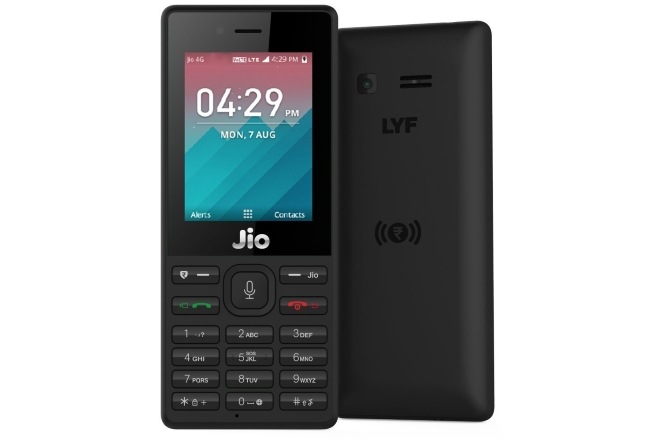Reliance Retail brand Lyf that makes Jio Phone has swept a 27 per cent market share to become India’s top leader in the overall mobile handset market for the month of January. According to a new survey report on the smartphone shipments in the country by market research firm CyberMedia Research (CMR), Lyf is leading the handset market in India, which is followed by Samsung at 12 per cent, and Itel, a Transsion Holdings brand, at third position with eight per cent share.
The CMR ‘India Monthly Mobile Handset Market Review Report for January 2018’ report further said that feature phone handset brand shipments covered a market share of 72 per cent, while smartphone shipments ended with 28 per cent. On a year-over-year basis, feature phones saw a growth of 116 per cent, the report said.
Prabhu Ram, who heads the Industry Intelligence Group (IIG) at CMR, believes that Lyf will continue to progress with good numbers to take on the ‘top honours’ in the country, resulting in the end of Samsung’s dominance in the overall handset market.
In fourth quarter of 2017, the smartphone market recorded a 19 per cent sequential decline while the feature phone market saw a 36 per cent sequential growth, and year-over-year growth of 62 per cent, the report said. In January 2018, the smartphone leader board continued to be dominated by Xiaomi with 27 per cent market share, while Samsung had a 25 per cent market share, with Lava at third with eight per cent market share, it added. Interestingly, Oppo saw a decline in the shipments in January, down from one of the top four positions among smartphone brands with just nine per cent share.
On the feature phone leader board for January, the top three brands were Lyf (37.3 per cent), Itel (11 per cent) and Samsung (seven per cent). It is worth mentioning that Jio Phone recently coveted itself the title of the top selling feature phone brand in India.
“For Samsung to continue maintaining its overall leadership, it would need to increase its shipments in the rest of the first quarter 2018 by at least 25-30 per cent,” Ram said.
“Going forward, Samsung should ramp up its strategy around the growing and increasingly exciting entry-level smartphone segment. Key areas of consideration for Samsung’s strategy would include introduction of 4G feature phones, joining Android Go, as well as handset bundling with telcos,” Ram added.







